
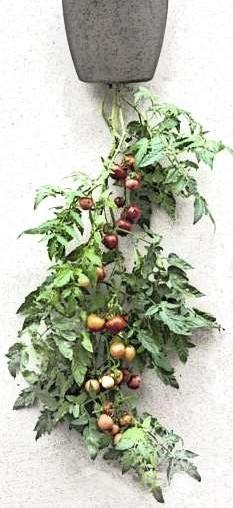

Laisse Pousser NLE 2022 Project Write Up BY:HARIKESHSUNKUR NAZIAB.JAFFOOKHAN DIANAHMUTONI Region:Pamplemousses Co-Trainer:KewalSEEGOOLAM &MitihileshMANDHUB
“Laisse Pousser” is a project that aims to be the intermediate solution between planters being discouraged from pursuing agriculture as their main economic activity and current garden farming practices that are demanding in terms of time, energy to the commoners. The project will incentivise planters to innovate by upselling their live mature plantsand fineherbtraysthatwillhavealonger shelflife. Planterswillalsoplaya moreactive role in recycling and reduction of waste by re-using discarded hard plastics as vessels for organicvegetablegrowingpracticessuchasupside-downplanting. Ontheotherhand,people looking to grow their own crops will have access to spatially flexible installations containing mature, fruit bearing live plants that reduces the need for weeding, pest and insect protection, are easier to maintain and only need compost to obtain faster yield rates as compared to traditional methods. Activities will include field research, feasibility study, prototype and trial, adoption study, financial viability and evaluation. The underlying aim of the project is for planters innovate and adopt new strategies that will help Mauritians realise their capacity to grow their own produce, indulge in the practice of sustainable harvesting and consuming bio grown food.
We are very pleased with the representation of this project and the efforts made in structuring this projectto make it more feasible. Being able to tackle a problem which wehad at heart by researching potential solutions and gathering evidence of their effectiveness has given us immense satisfaction. The evaluation and conclusion part of this project was more difficult as we were limited by both the time allocated to carry out the project and inability to carry out more evaluation methods. It does leaves us with the feeling that it is a project that is still in progress until it’s major potential is reached.
The experience of participation in this NLE programme has enabled us to develop a betterunderstandingandmastermanyusefulskillsinleadershipandgaininganon-fieldknow how of implementing a project.
PAGE2OF26 PREFACE
Problem Tree …………………………………………………………………………… 4
Problem Statement …………………………………………………………………..… 4
Background Research…………………………………………………………….…… 5 Questionnairefor Problem Quantification ……….…………………………………… 6
Findings of Survey ………………….…………………………………………………... 7 Innovativeness of solutions selected .……………………………………………….... 10 Expected Results and Impact on Beneficiaries ….………………………………..… 13 Project Milestones ……………………………………….……..……………………… 13 Implementation …………………………………………………………….…………… 14 Perceived Advantagesto different stakeholders ..……………………….….……… 15 Project Evaluation and Customer Feedback Survey………………………………… 16 Our Marketing Slogan …………………………….……..……………………………. 17 The Evaluation Survey Questionnaire …………………….………………………… 18 Analysis and Interpretation of Data …………………..………...……………….…… 19 Evaluation ……………………………………..…………………………………..…… 22 Conclusion ………………………………………….……..……………………………. 24 What’s Next ……………………………..…………………….………………………… 25
Acknowledgement …………………..………...……………………………….….…… 26 Bibliography ………..………………..………...……………………………….….…… 26
PAGE3OF26
TABLE OF CONTENTS
PROBLEM TREE
Lack of Resources
Time Energy Land
Atthebeginningoftheproject,weestablishedthefollowingproblemtreewithrespecttowhat we perceived was thedisinterest and lack of people growing their own vegetables: –
PROBLEM STATEMENT
Figure1:ProblemTree
In light of current inflation hikes and increase in cost of living, food self-sufficiency can help to face the economic challenges ahead. During the Covid19 pandemic we saw the capacity of Mauritians to cultivateandproducetheir own vegetables.The samecannotbe saidpostpandemic, asmanyregressedbacktotheircomfortzoneofsimplybeingconsumers.Thereasonsareprimarily lackoftimeandenergyforwhatisdeemedasa labour-intensiveprocessforuncertainandweather dependentresults.Our projectaimsto introduce new strategiesandpractices invegetablegrowing that require less effort and maintenance.
PAGE4OF26
Lack of Food Security/ Resilience Lack of Garden Farming Facilities
Initiatives
Advertised but
Very hectic lifestyle Farming is considered as a hard job (stigma) Knowledge Not available in local context
and collaboration are not easily available Short Term Projects
difficult to adopt Labour Intensive Work in the Sun Not Climatic Resilient Not well covered or given to the public Practical Skills are not developed
To understand the current problems and verify our assumptions we proceeded to do an background research on the actors involved and a general survey.
1) Actors involved:
AnNGOthatpromotes theimplementationofbio agricultureand hydroponicsand aquaponics


Aparastatalorganization undertheaegisofSFWF forsmallplantersthat encouragesfarming practicesthroughtheGEF SmallGrantsprogram, schemesforbiofarming andsubsidiesonfertiliser
In summary we observed the limited distribution of compost bins only to the general public and that most of the schemes, help and educational activities from NGOs as well, were targeted for commercialfarmingpurposeswhichdidnot cater totheimpactthegeneralpubliccouldhave ifthey adopted kitchen gardening practices and became food resilient. It is also to be noted that the general public abstains from making substantial initial investments when thinking of agriculture or farming for theirownneeds as required for hydroponics and aquaponics.
2) General survey:
Wealsoproceededincarrying agoogleformsurveyofthegeneralpublic(resultscopyattached in Appendix A) to see the requirements of the general public on the question of growing their own crops and bio crops.
PAGE5OF26
BACKGROUND RESEARCH
Government NGOs
Falcon Association Young Farmers
Compost Bin Distribution
Seed and Seedling Distribution
QUESTIONNAIRE FOR PROBLEM QUANTIFICATION
Q1: What is your agegroup?
A. 15-25
B. 26-35
C. 36-60 D. 61-80
Q2: IsfoodsecurityandthefactthatMauritiansare increasingthe importoffruitsand vegetables a real problem that needs to be tackled?
A. Strongly disagree B. Disagree C. Neutral D. Agree E. Strongly Agree
Q3: How much do you spend weekly on vegetables?
A. Less than Rs 100 B. In between Rs 100 and 250 C. In between Rs 250 and 500 D. More than Rs 500
Q4: Do you already grow your own crops?
A. YES B. NO
If no, do you think it will be beneficial to you to grow your own crops?
A. Strongly disagree B. Disagree C. Neutral D. Agree E. Strongly Agree
Q5: Do you have access to seed or seedlings to be able to start growing your own plants?
A. YES B. NO
Q6: Do you use compost or have a compost bin at home?
A. YES B. NO
Q7: Is bio agriculture beneficial to your health?
A. Strongly disagree B. Disagree C. Neutral D. Agree E. Strongly Agree
Q8: Is it better to consume fresh vegetables that have not beenrefrigerated?
A. Strongly disagree B. Disagree C. Neutral D. Agree E. Strongly Agree
Q9: What is the main reason for not being able to grow your own vegetables?
A. Lack of time / lifestyle
B. Lack of energy
C. Not enough land to grow your crops
D. Lack of knowledge
Q10: Is there a need for a product or solution that will make growing your vegetables at home easier?
A. Strongly disagree B. Disagree C. Neutral D. Agree E. Strongly Agree
Q11: Is the initial investment required to be able to grow your vegetables at home a main deciding factor?
A. Strongly disagree B. Disagree C. Neutral D. Agree E. Strongly Agree
PAGE6OF26
FINDINGS OF SURVEY
Out of the 82 participants that were studied, we found out that:
1) 98% were aged under 60, of which 65% were aged under 35.

2) 80% agreed that current situation of food supply needs to be tackled with.

PAGE7OF26
3) Around 35% spend inbetween Rs250and 500 whilst40%spendmorethan Rs500. Toalso notethat40%of thesepeoplearealready growing theirowncrops tosome degreeand 90% strongly agree that it is beneficial to do so for them.

4) Around 65% do not have access to seedlings and 55% do not already have a compost bin, theyneverthelessclaimthatthemainfactortonotbeabletogrowtheircropsisLackofLand (45%) and Lack of time due to lifestyle (44%). It is also to be noted that not any one of them stated the lack of energy as the inability to grow theirown crops.

PAGE8OF26
5) 85% of the people who participated believed that bio agriculture is beneficial to their health and it is better to consume fresh vegetables that have not been refrigerated. 73% of which state the need of a product or solution that will make growing vegetables at home easier.

6) 75% of the peoplewho participated also confirmed the notion that initial investment required was a major factor before adopting a method to be able to grow their own vegetables.

PAGE9OF26
INNOVATIVENESS OF SOLUTIONS SELECTED
1) Upside down planting:
Upside down planting originates from a school experiment overseas dating from 10 years ago. It has from then been adopted as a mainstream way of growing crops both commercially and from individuals. The main idea behind it is the use of gravity to prevent plants from undergoing excessive growth and thus flowering and producing fruits faster than conventional agricultural methods. One another main advantage of upside-down farming is the effectiveness in delivery of nutrients straight to the roots without any loss.
Advantages of upside-down planting:
reduces the need for weeding, pest and insect protection,
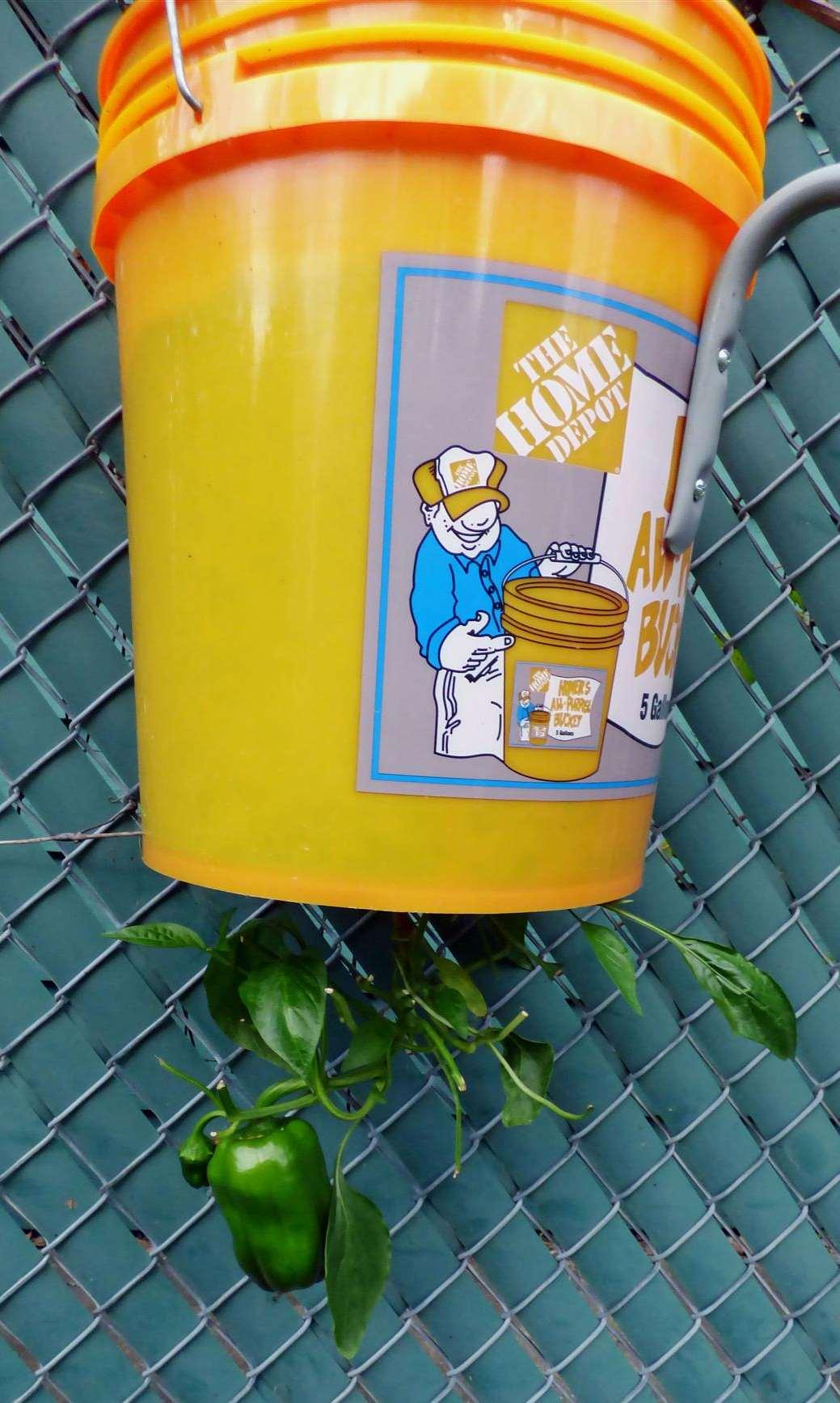
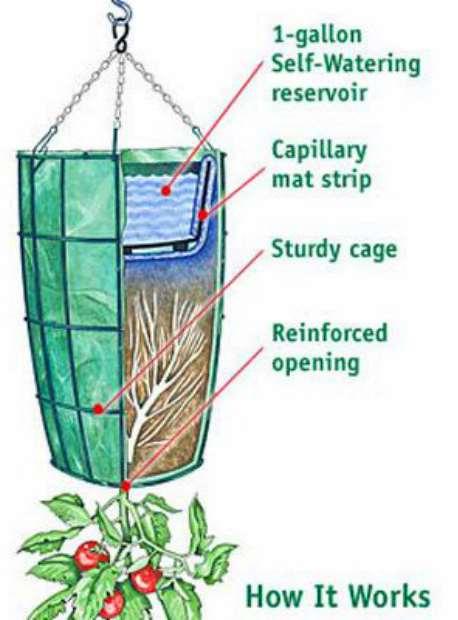



provides a flexible growth space

allows for easier maintenance

Source:Suviopedia.com
and has faster yield rates as compared to traditional methods.

enables the planters to upsell their produce and maximising their resources.
We proposed to implement the upside-down planting method while working with local farmers by having a 30:70 mix of soil and compost. Our target was to grow bio tomato plants, chilli plants and strawberries for the initial trial phase that could easily last threeharvesting phases.

PAGE10OF26
2) Recycling of Plastics:
As a taxonomic effect we also decided to include the recycling of plastics as an integral part of our solution. As from a survey made in 2016, Mauritius only recycles around 6.25% of its plastic waste as compared to UK where 44.3% of household plastic waste is recycled. Below is the chart categorising the types of plastic used and if they are recyclable or not. To note that in Mauritius currently only PET plastic bottles are being collected for future recycling.




Source:SLRecycling.co.uk
In this endeavour, weevaluated the potential plastic wastes (especially hard plastics as polyethylene)that were in form of containers or bucket shape that could be recycled. We found that paint buckets, food containers such as for yoghurt and ice cream and also plastic crates used in fruit pallets could be used alongside our solutions proposed.
PAGE11OF26
3) Live fine herb trays and bouquets
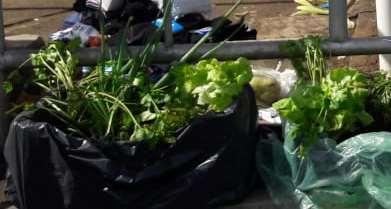


Another solution we came up with was to recycle the plastic trays used in fruit pallets to produce live fine herb trays that could sustain consumption for 2 weeks relying on a 50-50 mix of soil and compost. A sketch of the prototype and its main ideas as well as the picture of the final outcome is shown below.

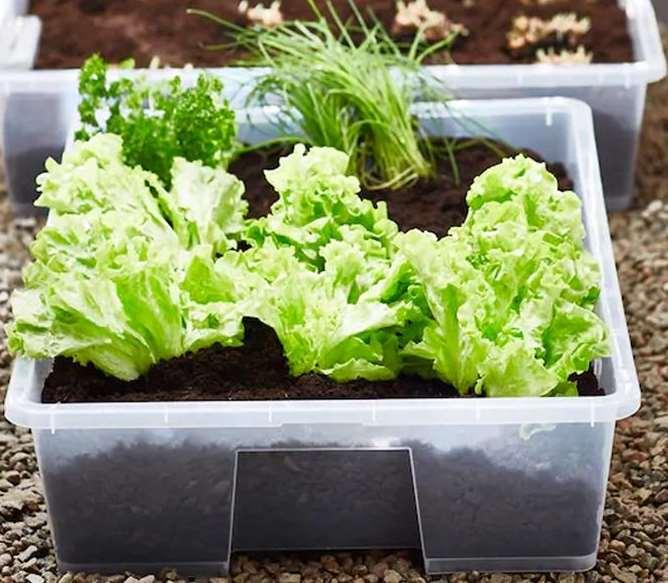
PAGE12OF26
EXPECTED RESULTS AND IMPACT ON BENEFICIARIES
Farmers apprised and incentivised to use new vegetable cultivation strategies, incorporate tools for sustainable harvesting and producing bio agricultural vegetables and fruits by innovating ontheirproductofferingsandsellinglive,floweringorfruiting,matureplantsandfineherbs.Farmers also upcycling hard plastics to combat waste production and environmental pollution. Mauritians gainingthecapacityandhabitofconsumingfreshproduce,herebyreducingfoodwastageandcosts associated with storage and benefiting from a healthier lifestyle due to consuming fresh and organically raised produce. Future large-scale expansion of this model by including supermarkets and a plastic recycling plant.
PROJECT MILESTONES:
Milestone 1: Field research on plastic containers that can be upcycled
Date: 20th August
Team Members: Harikesh SUNKUR, Nazia Begum Jaffoo KHAN
Milestone 2: Feasibility Study, Prototype and Trial Date: 27th August
Team Members: Harikesh SUNKUR, Nazia Begum Jaffoo KHAN, Dianah MUTONI
Milestone 3: Implementation with multiple farmers
Date: 3rd September
Team Members: Harikesh SUNKUR
Milestone 4: Market research and adoption study/survey
Date: 18th September
Team Members: Nazia Begum Jaffoo KHAN, Dianah MUTONI
Milestone 5: Financial viability and evaluation.
Date: 24th September
Team Members: Dianah MUTONI
PAGE13OF26
IMPLEMENTATION:

For the project implementation we approached 3 farmers, Mrs Collette Katooah from Bois Rouge, MrRakesh Ujoodhea from Mont Ida and MrKishore Lalloo from Creve Coeurto establish a working relationship and to trial these solutions. One challenge we faced was that despite being provided with the plastic containers and crates we collected, some of them continued to use them for their traditional practices of seedling farming as shown in the picture below.
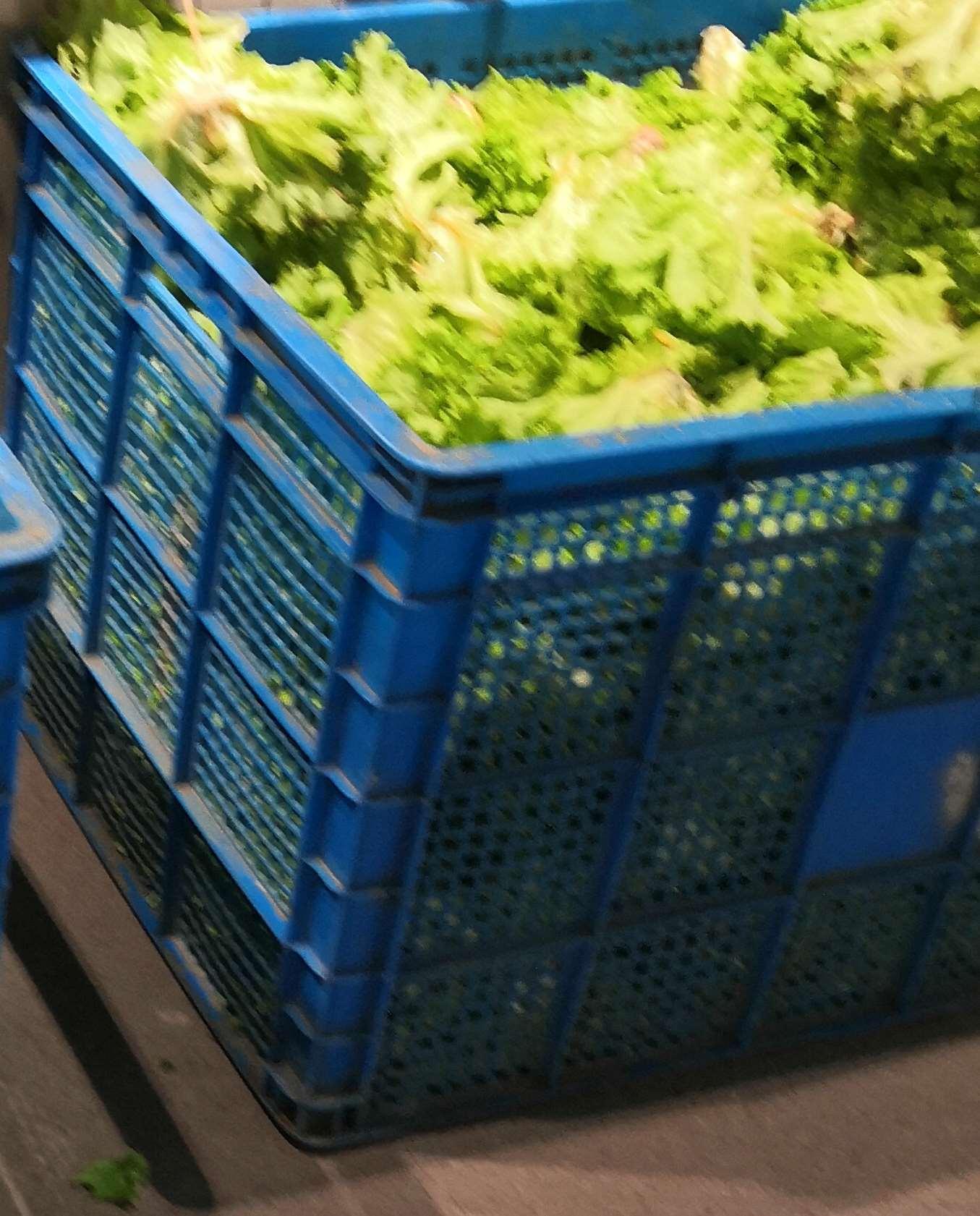

Wehadtothenconstructtheprotypesourselves intheirpresenceto showthem how itcould be done and had to do a weekly follow up in the fields to see the progress of the plant’s growth as well as fine tuning the amount and frequency of water that needed to be added. As expected, the tomato plants flowered sooner than the traditional method. Another potential opportunity that we saw was that normally tomato plants are discarded after their first harvest as most of them are not able to stay alive to achieve the second harvest. These plants could be transplanted and shocked withextracomposttocontinuetheirsecondandthirdharvestcyclesusingourupside-downplanters.




PAGE14OF26
PERCEIVED ADVANTAGES TO DIFFERENT STAKEHOLDERS
Nearing the end of our implementation phase, we could already grasp the potential advantages of our solutions to various stakeholders involved such as:
1) General Public
- No training is required to use the product and it is flexible in its setting up as it does not require floor space. In case of poor weather conditions, they are able to easily displace theupside-downplanters.Becauseitisataheight itisnotaffectedbypestsandrodents.
- Because the plants sold are already forming green fruits, they are able to purchase a product with guaranteed returns in contrast to buying seeds.
- They areable to enjoybio-grown products and adoptsustainable harvesting practicesas they will pick only what they will consume. This also helps to reduce food wastage and adopt healthier eating habits.
- Vegetablesandfruitsareconsumedfreshwithouttheneedofrefrigerationwhichenables them to make potentialenergy savings.
- They are able to easily adopt this solution as the initial cost is not high and they get their return back in 4 months’ time.
- It helps them combat inflation of prices during poor weather conditions.
2) Planters
- Planters are able to grow crops without using fertilisers and chemical pesticides. Initial investment for this solution is not high at all for them.
- Theyareabletoupselltheircurrentproductsandreducesthetimetheyneedtotakecare of the plants and avoid prolonged exposure to adverse climatic conditions.
- They offset the risk of theft (usually around 10% of yield) and insect swarms that usually targetripeningcrops. Theyalsominimisethewastageofharvestedcropstheyareunable to sell.
- They actively participate in the recycling of plastics which may be able to qualify for a subsidy in the future.
- With the live herb trays, they areguaranteed repeat customers every two weeks.
- With further standardisation of the fine herb trays, it is possible that they may be sold in large quantities inside supermarkets and hypermarkets.
-
PAGE15OF26
PROJECT EVALUATION AND CUSTOMER FEEDBACK SURVEY
To conclude our implementation phase, we decided to carry out a customer awareness campaign and conduct a survey at the same time at the local vegetable market of Pamplemousses as illustrated in the pictures below.



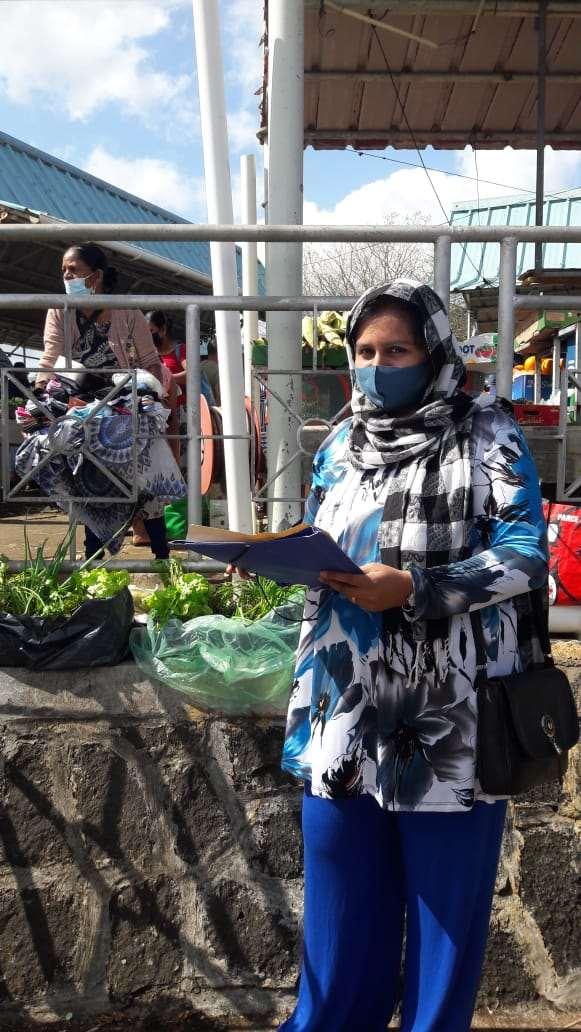
Oneofthemajorastonishmentswehadwasthe interestfromSenior Citizenswhowerevery onboardwiththisprojectandwantedtofindoutmoredetailsregardingcompostandhowtheycould replicatethesesolutionsattheirhomesthemselves. ThisincentivisedustocreateaFacebookpage that informed the general public and was complimented with videos on how to create your own upside-down planters and create your own compost bins.

PAGE16OF26
Pa necessairetransplanter, acheter lerla to nek bizin arozer ek laisse pousser.
Nepli bizin verser ou fouiller, li trop facil, nek bizin accrocher lor barage, lor lacorde, kot to gagne porter pu to recolter zis seki to pu manger, tout letemps to pumange legume frais, nek arozer ek laisse pousser.



servi pesticide ou insecticide, sablier la haut kot bebet ou courpa pu monter, nek to bzin arozer ek laisse pousser!
Pa bizin fertilisant ladans, nek par la haut ajoute composte, topu manze bio aster mere dost, nek arozer ek laisse poucer!!! ”
PAGE17OF26 OUR MARKETING SLOGAN:
“
THE EVALUATION SURVEY QUESTIONNAIRE
Q1: What is your age?
A. 15-25
B. 26-35 C. 36-60 D. 61-80
Q2: With regards to these solutions to make kitchen gardening easier, do you find them innovative?
A. Strongly disagree B. Disagree C. Neutral D. Agree E. Strongly Agree
Q3: Do you think adopting a sustainable harvesting approach will help you reduce food wastage?
A. Strongly disagree B. Disagree C. Neutral D. Agree E. Strongly Agree
Q4: Will using these products enable youto make more financial savings?
A. Strongly disagree B. Disagree C. Neutral D. Agree E. Strongly Agree
Q5: Will this solution be adopted by many in the long term?
A. Strongly disagree B. Disagree C. Neutral D. Agree E. Strongly Agree
Q6: How likely are you to refer this product to a friend or colleague?
Score from 0 to 10: ……………..
Q7: If yes, how much would you be willing to pay?
A. 1 X Price of ripen vegetables
B. 2 X Price of ripen vegetables
C. 3 X Price of ripen vegetables
D. 4 X Price of ripen vegetables
Q8: If you knew that these vegetables were bio, would you be willing to pay more?
A. Yes B. No C. Neutral
Q9: Is it a good solution to recycle hard plastics?
A. Strongly disagree B. Disagree C. Neutral D. Agree E. Strongly Agree
Q10: From where would you be more willing to purchase this product if made available?
A. From your local farmer
B. From your local vegetable market
C. From your local supermarket
D. From a hypermarket / specific place
PAGE18OF26
ANALYSIS AND INTERPRETATION OF DATA
1) 60% of the 30 people who participated in the survey were aged between 36-60.
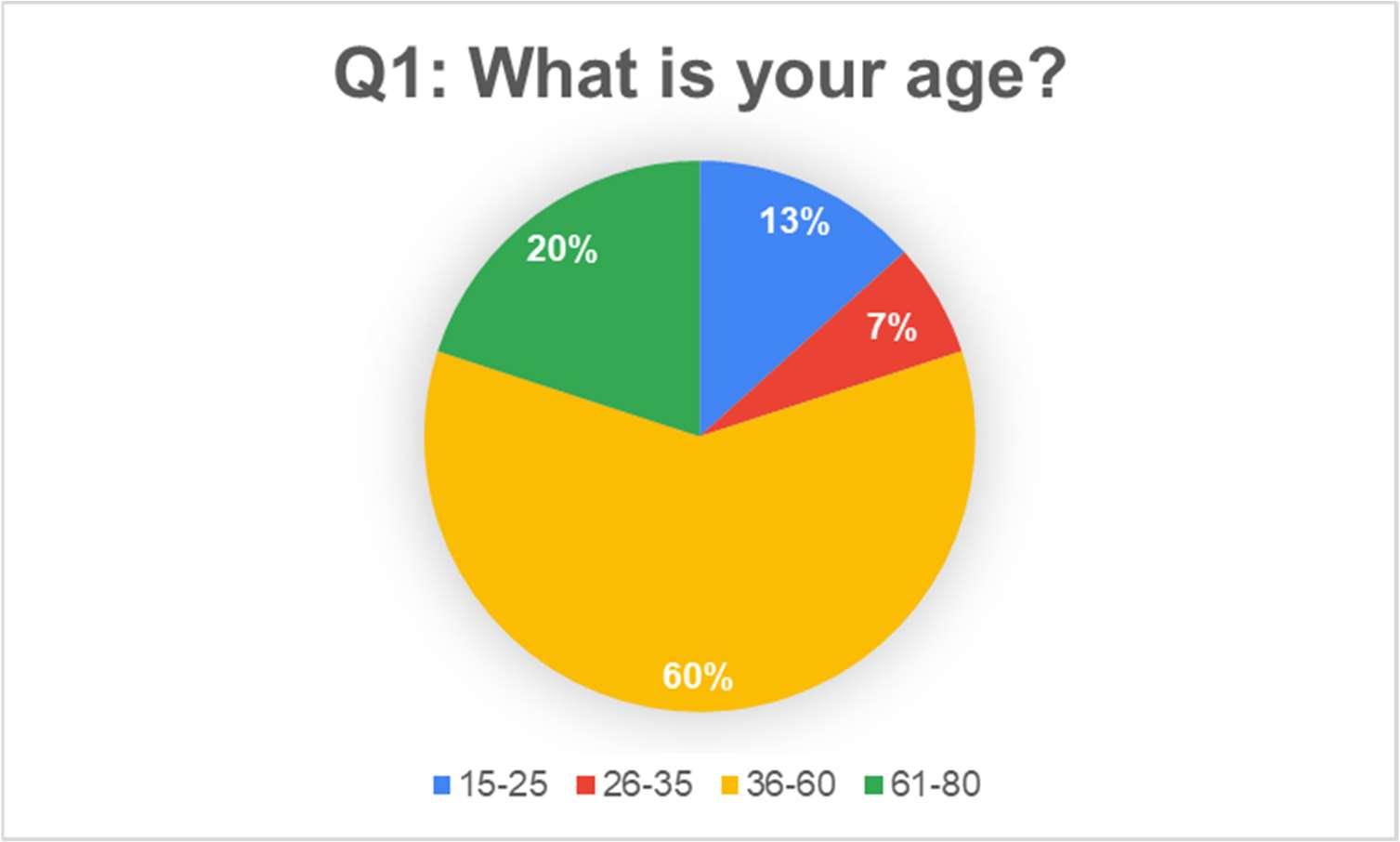
Awareness of Limitations of Evidence collected using this Method:
As it was done during a single day and a small sample size of collection, the data collected may not represent the truth and the figures obtained may not be a true representation of the experience of the customers within all age groups.
2) 100% of the participants agreed on the innovativeness of the solution and desire to adopt it. They also stated that these solutions would definitely help them make substantial financial savings on the long term.

PAGE19OF26
3) 97% of the participants agreed on the potential of these solutions to be adopted on the long termby many.
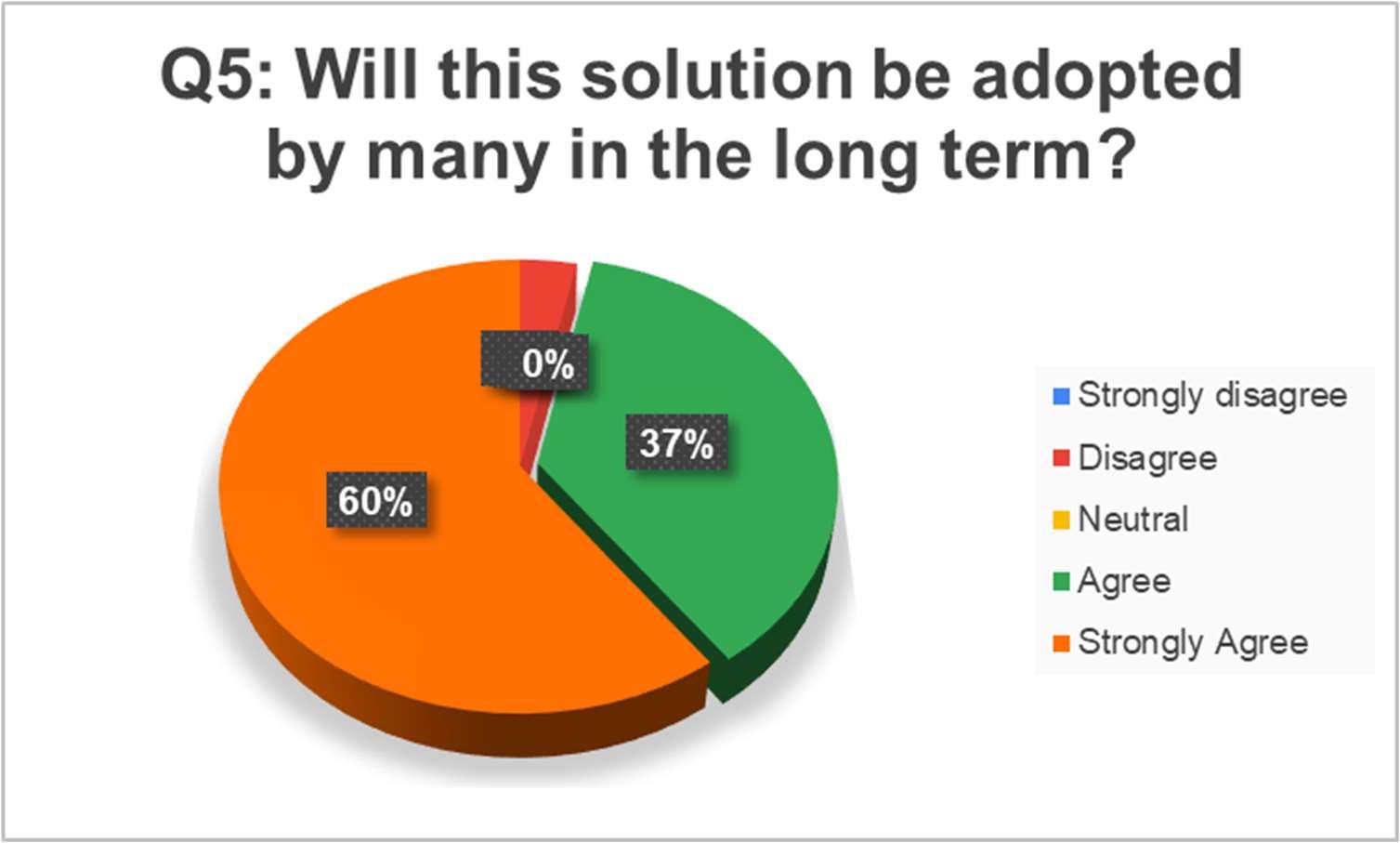
4) 70% of the participants rated the product a 9 or above in terms of referral to another friendorcolleague. Thisisanimportantstatisticasitshowsthatthisproductcanbesuccessfully marketed via word of mouth.

PAGE20OF26
5) With regards to the price that customers were willing to pay was 50% for the same value as ripen vegetables and 50% willing to pay 2X or more the price with the knowledge of further yields possible. 83% of these customers also stated that they would be willing to pay more if they were given assurance that this productis bio grown.

6) Finally, 100% of the customers agreed that it was a good solution to recycle hard plastics and 50% would like to buy it from theirlocal farmer whilst 47% would like it to be availableat the local vegetable market. They emphasised the fact that from supermarkets or hypermarkets, the price would most likely not be so affordable.
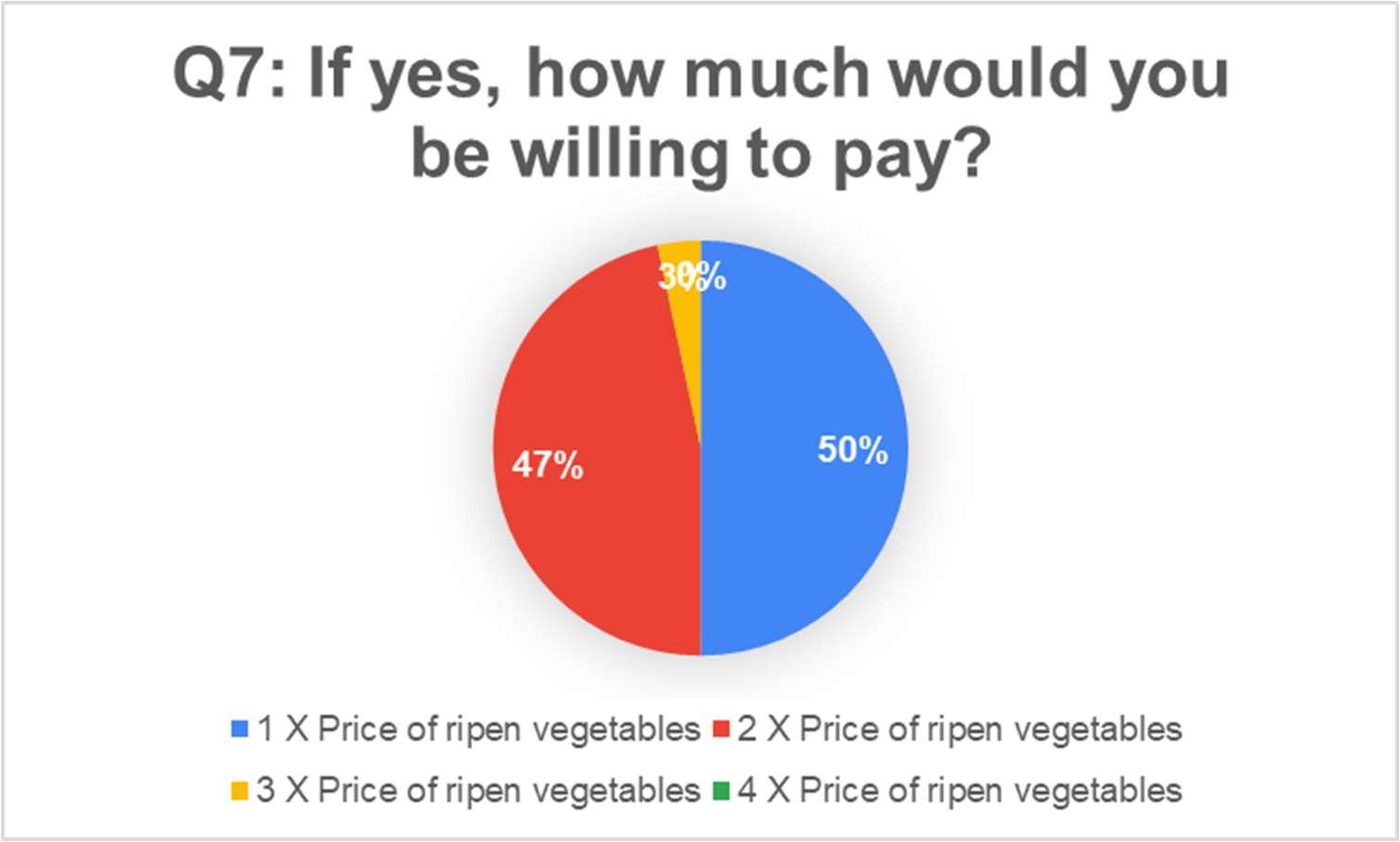
PAGE21OF26
EVALUATION

Planters nowadays really have a tough business to be involved in. In between day to day taking care of their crops, harvesting and selling them, it really maximises their physical resources. Theydonothavetheluxuryoftimeorfinancestoexperimentwithnewalternativesandinnovateon theirofferings. Throughout this project we have demonstrated a few ways in which they are able to mitigate the risks they take, be more efficient in their production, secure repeat customers and be able to upsell their products. This may only be the start of the real agricultural revolution and it has to be sustained with more innovations to keep their business going and finally achieving food resilience in the Mauritius. As illustrated in Figure below, there are six stages in the product life cycle: exploration, involvement, development, consolidation and stagnation which can then lead to either rejuvenation or decline.
Source:GraphicaldepictionofProductDevelopmentbyProfessorRichardButler
The success of this project will depend mainly on the ability of Planters to innovate further and also using the right marketing mix. The longevity of the project is also critical as the current spending/consuming habits of Mauritians can be altered in a significant manner for the betterment of resiliency and the local economy.

PAGE22OF26
Product Development
SWOT Analysis ofSolutions Proposed
STRENGTHS
Unique and Innovative
Eco-friendly
Responds to Current requirements
Easy to implement
Aligns with current trend requirement which may help financing
OPPORTUNITIES
Development of a new market
Increase recycling of plastics
Potential for growth
Integration of other similar solutions and experimentation with other varieties of plants
Market Segmentation
WEAKNESSES
Seasonality of crops
Access or shortage of plastic recyclables
Transporting of the upside-down planters
SWOT
THREATS
Dishonest planters and fraudulent products
Inactivity once critical awareness is achieved
Negative reviews
Mauritius is a small country and the agricultural industry is supported mainly by tourists with locals playing an important support role during the low seasons.
Marketing Mix
Another tool to analyse the effectiveness of the products that are offered, is to evaluate the marketingmixusingthe4Pmethod. Itaimstoanalysethedifferentelementsthatgointopromotion and the general guidelines being followed to ensure effectiveness.
1. Product:
The product must do what consumers expect it to do. Meeting and exceeding expectations are minimum requirements for long-term success. Being available readily to the customer is the right strategy of introducing these new solutions in order to enter the rejuvenation phase in the business.
PAGE23OF26
2. Price:
The product pricing has to be affordable to the target market as best as possible and be competitive with regards to other offerings from competitors. Knowing the likely spending habits of customersaheadoftimewillenableplanterstodeducethevarietyofcropsthatwillstillattractsales.
3. Place/ Method of delivery

We recommend that the customers buy theproducts straightfrom their local planter soas to be able to establish a direct relationship with them. One difficulty we observed is that of ease of transport.Specialstandshavetoplacedonvanstobeabletotransportthemwithoutmuchdamage. A planter being on the premises of the customer would also be able to guide them better where to correctly position the plants to avoid over exposure to the sun, the amount and frequency of water to be added depending on the micro climate and which precautions need to be taken.
4. Promotion:
Promotionisallaboutdevelopingtheconnectionwithlocalinhabitantsfortheplanters. They willget more referrals through word of mouth and be able to consolidate their business. It is also a methodthatover timewillfilterthebestadoptersofthissolutionintermsofquality,consistencyand value.



CONCLUSION
Thisprojectoriginatedfromthepersonalneedwefeltfor change and innovation required in the current agricultural industry in Mauritius. Through this project we hope that we have demonstrated the feasibility and viability of these proposed solutions and hope that these efforts to make a meaningful can be sustained in the future. Currently we just had one of the tomato plants which had already had its first phase of harvest and transplanted upside-down flower again for a second harvest.

PAGE24OF26
WHAT’S NEXT
Work with the Ministry and otherorganisations to include the potential hard plastics that can be reused by planters in their collection scheme.
Experiment with new vegetables, especially staple ones like the eggplant, and fruits to find it they are feasible using these systems.


Approach more planters so that they can be onboard with these innovations.

PAGE25OF26
ACKNOWLEGEMENT:
This project would have not been possible without the continuous encouragement and support from our team and family member. Special thanks go to the Pamplemousses NLE team, our co-trainers Kewal SEEGOOLAM & Mitihilesh MANDHUB, for their formation, education and support during this process. We would also like to thank Mr R.K BHEEKARY and Mr RAWOO from the District Council of Pamplemousses that helped us to our presentation and survey at the market fair.

BIBLIOGRAPHY:
Crouse, Theresa. ‘Small Spaces Survival: Growing Food Upside Down’. Survivopedia, 29 Dec. 2016, https://www.survivopedia.com/small-spaces-survival-growing-food-upside-down/ (Accessed 05/08/2022)
Republicof Mauritius-Minister Ramano Encourages the Population to Produce and Use Organic Compost. http://www.govmu.org/English/News/Pages/Minister-Ramanoencourages-the-population-to-produce-and-use-organic-compost-.aspx. (Accessed 25/07/2022)
Nick. ‘Plastic Waste Recycling, Collection & Disposal South Wales’. SL Recycling, https://www.slrecyclingltd.co.uk/waste-management/plastic-recycling/. (Accessed 10/08/2022)
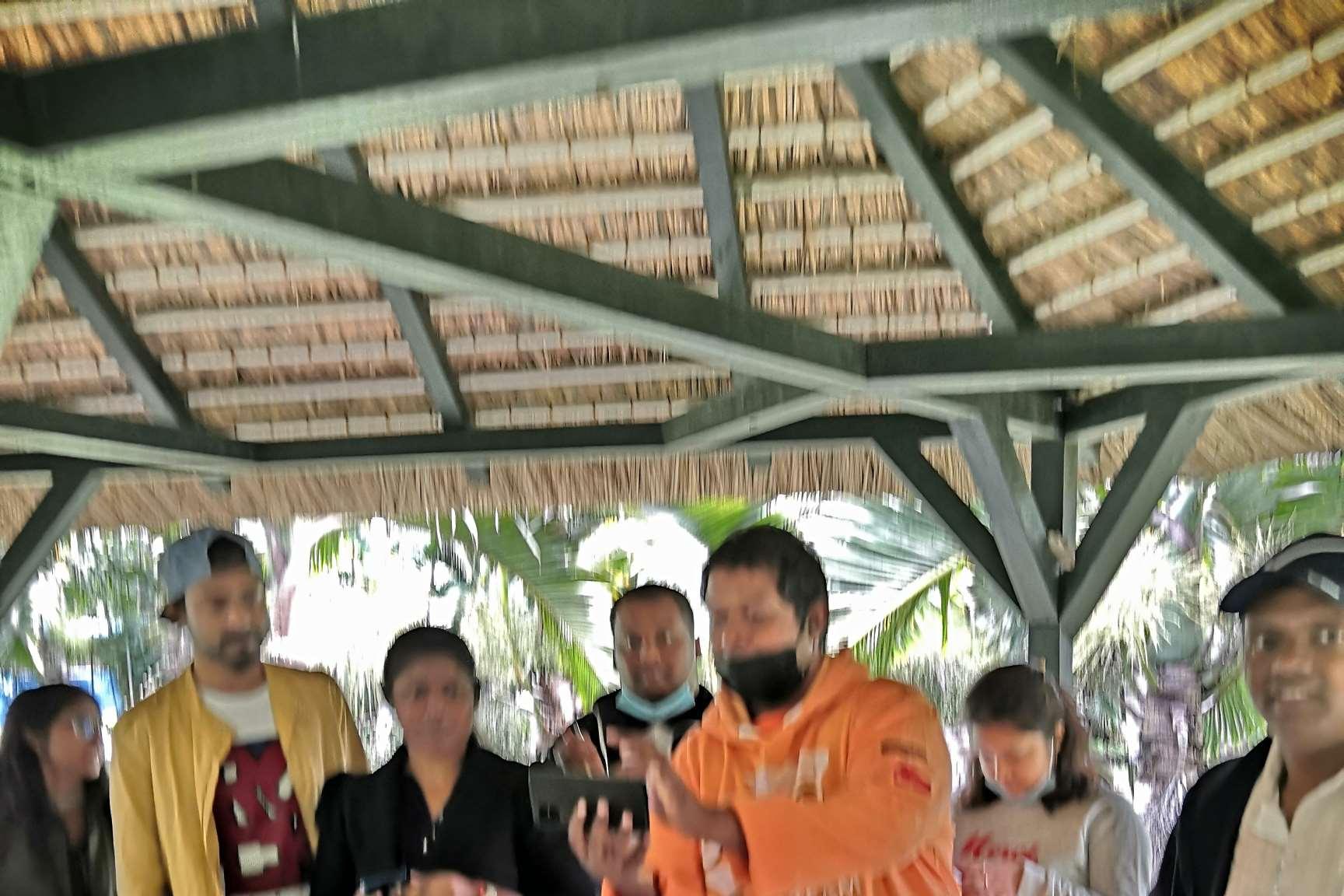
PAGE26OF26






























































